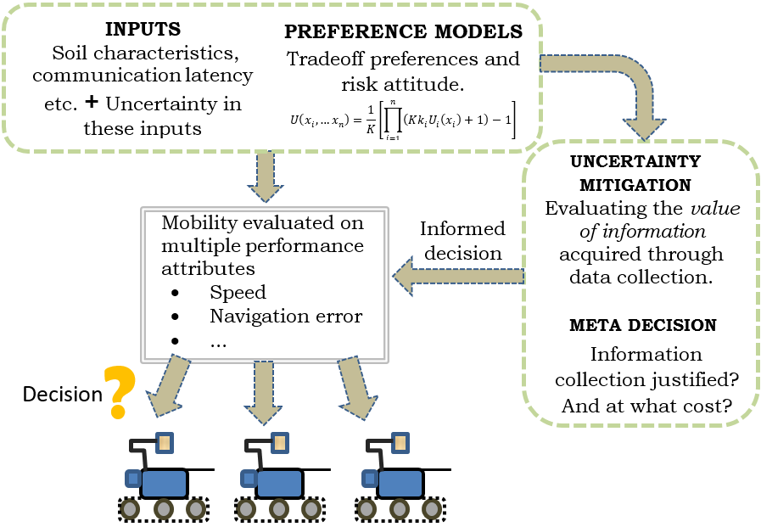Vehicle Controls & Behaviors
Annual PlanA Decision-Based Mobility Model for Semi and Fully Autonomous Vehicles
Project Team
Government
David Gorsich, U.S. Army GVSC
Industry
Judson Estes, Fiat Chrysler
Student
Line Deschenes, Sam Kassoumeh, Oakland University
Project Summary
Project began in 2018.

This work will develop a method to define mobility for ground vehicles exhibiting partial to full-autonomy. The existing counterpart is the measure derived from the NATO reference mobility model (NRMM) and the upgrades made to it over time. More generally, this research will provide a formal methodology of evaluating ground vehicle systems and thereby help with acquisition decisions pertaining to them. To ensure that the proposed model is consistent with existing methods and is also amenable to future vehicle developments, careful attention will be given to the mobility metric of choice, attributes that affect it (including cost), decision variables and sources of uncertainty. A decision-theoretic approach is envisioned.
The general objective is to incorporate the decision making preferences of the US Army into an unambiguous metric for evaluating ground vehicles exhibiting some degree of autonomy. This will be done through proper attribute identification and modeling of the US Army’s preferences over them. Any degree of autonomy has the potential to severely alter the mobility of the vehicle, and must be accounted for in the metric – a shortcoming in the existing methods. Different terrains must also be tested as well as uncertainties in them. With this in mind, the research will first create and solidify a set of desirable properties for the metric.
Publications from Prior Work:
- Nikolaidis, E., Mourelatos, Z. and Pandey, V., 2011, Design Decisions under Uncertainty with Limited Information, Taylor and Francis, 1st Edition.
- V. Pandey and Z.P. Mourelatos, “A New Method for Making Design Decisions: Decision Topologies,” ASME Journal of Mechanical Design, 137(3), 031401 (8 pages), 2015.

